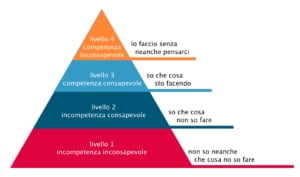How to study music
- Author Profile
- Recent posts
Interested in jazz, classical music on original instruments, radical improvisation. Diploma from the Cagliari Conservatory. He has been active on the jazz scene since around 1980. He has played in symphony, opera and chamber music orchestras since 1985. He has been teaching double bass since 2001, and classical double bass, jazz and ensemble music at the Cagliari Conservatory since 2004.
How to study? how much? what to study?
You have 1 ½ / 2 or even 3 hours, go to the rehearsal room, or at home in your studio. You want to transcribe 2 solos, do scale exercises, study a dozen or so licks, learn 4 new standards, and practice Aebersold's stand-alones. After a month of this kind of practice, however, you do not notice any improvement.
Do you recognise yourself in this type of behaviour?
If the answer is yes, then you are part of the 90% of musicians.
How to get into the 10% of those who instead put their efforts to good use? There are many ways, let's try to tackle one of them:
The reason we don't notice any improvement is that such a studio is too dispersive. It is certainly gratifying, and the gratification comes from the fact that by playing with stand-alones we have the impression that we are playing well, in the sense that what we are doing resembles the result we would like to achieve. Too bad that instead it only resembles it, and this momentary gratification prevents us from getting to the bottom of things, and greatly hinders our progress in the studio. How then?
One fundamental thing must be taken into account: our brain is not capable of storing all that information in such a short space of time, and even if we managed to do so, it would be short-lived. Once the study session is over, we would have nothing left.
The goal must be simple: concentrate your time on very few things, and at the end of the session you must have made some progress. Even very small progress, but real progress.
In order to do this, we apply the 4 levels of learning, but not those in use (unfortunately) in our schools, i.e. advanced, intermediate, basic, in the process of first acquisition. This is a learning technique that allows us to dismantle the problem into its most basic components, and work on them one by one, until it is fully acquired.
Let's take an example. We want to learn a new tune, to do this we must:
- learning and memorising the melody
- learning and memorising the chord sequence
- play it in all tones
- improvise on the harmonic sequence (see list below)
-
-
- do we have material to use on major chords?
- do we have material to use on minor chords?
- we have material to use on dominant 7th chords
- etc.
-
- listen to different performances of the piece
- improvise on the harmonic sequence in different keys
- playing the song with different rhythms (e.g. swing, bossa nova, rock etc.)
we could go on for a long time with this list, and it would never be exhaustive.
As you can see, even a simple study topic like learning a new song can take up much more than a few hours of work.
Let's start with point 1): learning and memorising the melody.
We have several options to do this. We can read it from a fake book, perhaps with wrong or at least inaccurate chords, or (better) listen to it in the performance of our favourite musicians, and transcribe it (in the sense of memorising the melody line even without writing it down).
But how do the 4 levels of learning work?

According to the pattern we could call them:
- unconscious incompetencei.e. I don't even know what I don't know how to do. Simply recognising this status takes us to the next level, which will allow us to work on the subject.
- conscious incompetencei.e. I know what I do not know how to do. I have become aware of the thing in which I am ignorant, and I work to acquire competence in this regard.
- conscious competence i.e. I know what I am doing and I apply it consciously. I have worked on the subject and am able to apply my knowledge consciously. For example, I play the theme of the song, I remember the notes, the intervals that make up the melody, the rhythm on which the melody is built, and I can do this in different keys.
- unconscious competencethat is, I am able to apply the knowledge I have acquired without thinking about it. So for example I can play the theme without thinking about the notes that compose it, the rhythm or the key. All this happens without me having to think about intervals, notes, rhythms etc.
If we apply this scheme to every item on the list we made above, and we come up with all of them (honestly, without bluffing), we can say that we have somehow solved the problem, and made progress.
As Bill Evans said, the problem of improvisation is immense, it cannot be solved in a lifetime, and we certainly cannot solve it by working on it as a whole. That is why we have to break it down into all its components and work on one at a time, and once we have metabolised it, move on to the next topic.
This applies to every single thing we want to study, even for example instrumental technique, or harmony, or reading.
The good thing about this system is that by dismantling the problem into its most basic components we can work on one at a time and make small progress in a short time. This then allows us to imprint in our minds what we have acquired, and it will not go away.






Leave a Reply
Want to join the discussion?Feel free to contribute!